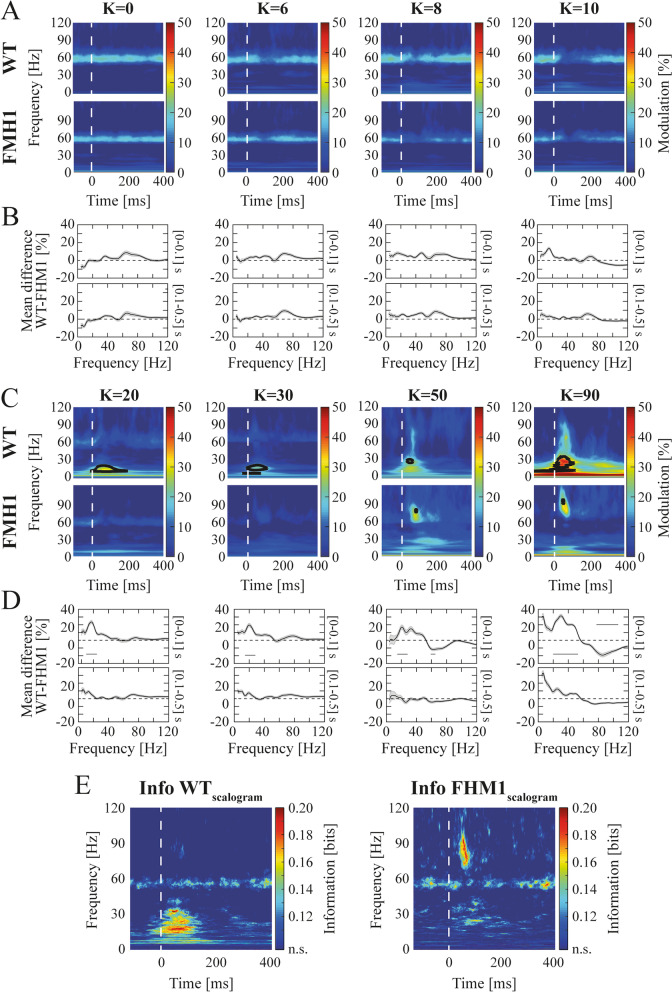Fig. 2.
High visual contrasts were encoded in different ɣ bands in WT and FHM1 mice. A Mean scalogram modulation as a function of low visual contrasts (K ≤ 10) in WT (top row) and FHM1 (bottom row) mice around [− 100,400] ms of contrast reversals (indicated by the vertical dashed white lines for this whole figure). B Mean difference between the WT and FHM1 time-averaged scalogram modulations in the early ([0–100] ms, top row) and late ([200–500] ms, bottom row) window following contrast reversals. C Same as A) for high levels of visual contrast (K ≥ 20). Black contoured regions indicate statistical difference between WT and FHM1 (permutation pixel-based test). D Same as B) for high levels of visual contrasts (K ≥ 20). Statistical significance is depicted by solid horizontal lines (permutation cluster-based test). E MI carried by the LFPs scalogram modulations in WT (left) and FHM1 (right) mice about visual contrast levels. ‘n.s.’ in the colorbar stands for non-significant MI

